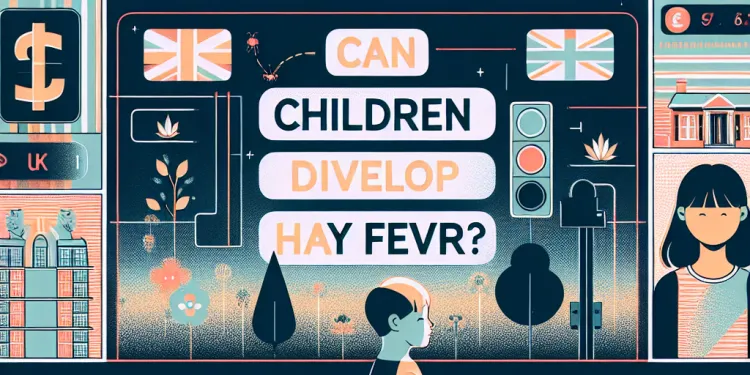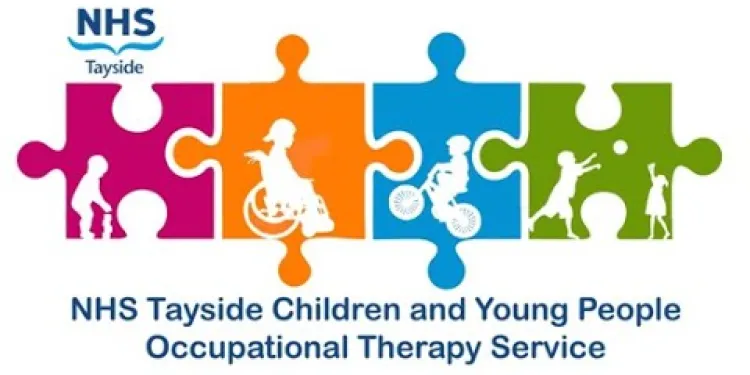Find Help
More Items From Ergsy search
-

Evidence-Based Interventions: grommets for glue ear in children
Relevance: 100%
-

Glue Ear Pathway
Relevance: 76%
-

How can early intervention help children with autism?
Relevance: 28%
-

Self care: Treating ear infections
Relevance: 21%
-

Who are SEND children?
Relevance: 18%
-

Early onset dementia | NHS
Relevance: 18%
-

Can I end a lease agreement early?
Relevance: 17%
-

Can children develop Crohn's disease?
Relevance: 17%
-

Living with early stage kidney disease
Relevance: 17%
-

Children's Vaccination Schedule
Relevance: 17%
-

What is lupus in children?
Relevance: 17%
-

Lupus in children | NHS
Relevance: 17%
-

Why do some children stammer?
Relevance: 17%
-

What causes lupus in children?
Relevance: 17%
-

Children With Co-ordination Difficulties and Dyspraxia
Relevance: 16%
-

Can children benefit from chiropractic care?
Relevance: 16%
-

Can children use Mounjaro?
Relevance: 16%
-

Understanding Mental Health in Children
Relevance: 16%
-

Can defibrillators be used on children?
Relevance: 16%
-

Dyspraxia Children: How to Help
Relevance: 16%
-

Prostate cancer symptoms - detecting them early
Relevance: 16%
-

Is tooth decay common in children?
Relevance: 16%
-

What provisions are there for firefighters who retire early by choice?
Relevance: 16%
-

What are SEND children?
Relevance: 16%
-

Is Baxdrostat suitable for children?
Relevance: 16%
-

What are the common symptoms of lupus in children?
Relevance: 15%
-

Can children have sleep apnea?
Relevance: 15%
-

Helping Children With Co-ordination Difficulties
Relevance: 15%
-

Can children develop hay fever?
Relevance: 15%
-

Developmental Coordination Disorder (DCD) for Children and Young People
Relevance: 15%
-

What should I do if I start bleeding during early pregnancy? | NHS
Relevance: 15%
-

Are there specific mobility equipment for children?
Relevance: 15%
-

Navigating Mental Health Services for Children and Adolescents
Relevance: 15%
-

Can children outgrow asthma?
Relevance: 15%
-

Can retired firefighters access their pension early on the grounds of ill-health?
Relevance: 15%
-

Can Wegovy be used by children?
Relevance: 15%
-

Can children develop chronic fatigue syndrome?
Relevance: 14%
-

How is lupus diagnosed in children?
Relevance: 14%
-

What type of anxiety do children and teenagers experience?
Relevance: 14%
-

Can children receive the flu vaccine as a nasal spray?
Relevance: 14%
Evidence-Based Interventions: Grommets for Glue Ear in Children
Understanding Glue Ear
Glue ear, or otitis media with effusion (OME), is a common condition in children where the middle ear becomes filled with a sticky, glue-like fluid. This can lead to hearing problems and, if left untreated, may affect a child's language development, academic performance, and social skills.What Are Grommets?
Grommets, also known as tympanostomy tubes or ventilation tubes, are tiny tubes inserted into the eardrum to allow air to enter the middle ear. This helps drain fluid and prevent the build-up that characterises glue ear. The procedure is commonly recommended for children who experience persistent glue ear and associated hearing difficulties.Effectiveness of Grommets
Evidence strongly supports the effectiveness of grommets in reducing the symptoms of glue ear. Studies indicate that grommets can significantly improve hearing levels within the first few months post-surgery. They work by allowing normalisation of air pressure in the middle ear and maintaining aeration, hence preventing fluid accumulation.Selection Criteria for Grommet Insertion
In the United Kingdom, grommets are typically recommended for children who have had persistent glue ear for more than three months, especially if it affects both ears or is causing significant hearing loss. A detailed hearing assessment is usually conducted to confirm the necessity of the procedure.Procedure and Recovery
The insertion of grommets is a relatively quick and low-risk surgical procedure usually performed under general anaesthesia. Recovery is also swift, with most children returning to normal activities within a few days. Grommets usually stay in place for 6 to 12 months before naturally falling out as the eardrum heals.Post-Operative Care and Monitoring
After grommet insertion, regular follow-up appointments are crucial to monitor the child's hearing and ear health. Parents are often advised to keep the ears dry to prevent infections, and some precautions may be needed during swimming or bathing.Alternatives and Considerations
Though grommets are effective, they are not the only treatment for glue ear. Watchful waiting, hearing aids, or non-surgical methods such as autoinflation can also be considered depending on the individual circumstances. Discussing options with an ENT specialist is essential to choose the best approach.Conclusion
Grommets present a robust, evidence-based intervention for treating glue ear in children, offering significant improvements in hearing and overall quality of life. By understanding the benefits and considerations, parents and healthcare providers in the UK can make informed decisions to address this common childhood condition effectively.Evidence-Based Interventions: Grommets for Glue Ear in Children
Understanding Glue Ear
Glue ear, also known as otitis media with effusion (OME), is a common condition in children where the middle ear becomes filled with a thick, sticky fluid. This can cause hearing issues and may impact speech development and educational performance. In the United Kingdom, it is especially prevalent among children aged between two and five years.The Role of Grommets
Grommets, also called tympanostomy tubes or ventilation tubes, are tiny tubes inserted into the eardrum to allow air to enter the middle ear. This helps to equalize pressure, drain fluid, and prevent further fluid buildup. Grommets are typically recommended when conservative treatments, such as observation and medical management, have failed.Evidence Supporting Grommet Use
Recent studies in the UK have shown that grommets can significantly improve hearing in children with persistent glue ear. Research indicates that the insertion of grommets results in an approximate reduction of middle ear fluid and significant hearing improvement within the first few months post-surgery. Additionally, grommets have been shown to decrease the occurrence of ear infections, thereby reducing missed school days and improving the quality of life for children and their families.Procedure and Recovery
The procedure to insert grommets is usually short and performed under general anesthesia. It involves making a small incision in the eardrum to place the grommet. Post-surgery, most children can go home the same day and resume normal activities within 24 hours. Grommets often stay in place for 6 to 12 months and naturally fall out as the eardrum heals.Risks and Considerations
While the insertion of grommets is generally safe, it is not without risks. Potential complications include ear infections, scarring of the eardrum, and in rare cases, persistent perforation of the eardrum. It is essential for parents to discuss the potential benefits and risks with their child’s healthcare provider to make an informed decision.Parental Guidance and Follow-up
Parents should monitor their child's hearing and be vigilant for signs of ear infections post-surgery. Regular follow-up appointments with the ENT specialist are crucial to ensure the grommets are functioning correctly and that the child's hearing and ear health are improving.Conclusion
Grommets are a well-established, evidence-based intervention for managing glue ear in children in the UK. They offer significant benefits in terms of hearing improvement, reduction in ear infections, and overall quality of life. However, as with any medical procedure, it is vital to weigh the benefits against potential risks and to maintain regular follow-up care. By working closely with healthcare providers, parents can ensure the best outcomes for their children's ear health and development.Evidence-Based Help: Grommets for Glue Ear in Kids
What is Glue Ear?
Glue ear is when sticky fluid fills the middle ear. This can make it hard for kids to hear properly. If not treated, it might affect how they speak, do in school, and make friends.What Are Grommets?
Grommets are tiny tubes put in the eardrum. They let air into the middle ear, helping to drain the sticky fluid. This stops fluid from building up. Doctors often use grommets for kids who have glue ear for a long time and trouble hearing.How Do Grommets Help?
Grommets are good at helping with glue ear. They can make hearing better in the first few months after they’re put in. Grommets let air move in the ear and stop fluid from coming back.When Do Kids Need Grommets?
In the UK, doctors suggest grommets if a child has glue ear for more than three months. This is especially true if it affects both ears or causes big hearing problems. A special hearing test is done to see if grommets are needed.Procedure and Getting Better
Putting in grommets is a quick and safe surgery. It is done while the child sleeps with medicine called anesthesia. Kids usually feel better in a few days. Grommets stay in the ear for 6 to 12 months and fall out on their own when the ear heals.Care After Surgery
After grommets are put in, kids need check-ups to see how their ears and hearing are doing. Parents should keep the ears dry to stop infections. Some care is needed when swimming or bathing.Other Options to Consider
Grommets are not the only treatment for glue ear. Doctors might also suggest waiting and watching, hearing aids, or other non-surgery methods. Talking to an ear specialist is important to find the best option.Conclusion
Grommets are a great way to treat glue ear in kids. They help kids hear better and enjoy life more. By knowing the choices and benefits, parents and doctors in the UK can make smart decisions to help kids with glue ear.Evidence-Based Interventions: Grommets for Glue Ear in Children
What is Glue Ear?
Glue ear is when a sticky fluid fills the middle part of the ear. It is common in young kids. This can make it hard to hear. It might also slow speech learning and affect school work. In the UK, it often happens to kids aged two to five years old.What Do Grommets Do?
Grommets are tiny tubes put in the ear to help air get in. This keeps the pressure steady and lets fluid drain out. Grommets are used when other treatments have not worked.Why Use Grommets?
In the UK, studies show grommets help kids with glue ear hear better. They reduce ear fluid and improve hearing after a few months. Grommets also help prevent ear infections. This means kids miss less school and feel better.Getting Grommets
The operation to put in grommets is simple. It takes a short time and is done while the child is asleep. A small cut is made in the eardrum and the grommet is put in. Kids usually go home the same day and feel better after 24 hours. Grommets last 6 to 12 months and then fall out on their own.Possible Risks
Putting in grommets is mostly safe, but there are some risks. These include ear infections, eardrum scars, or a hole in the eardrum that doesn't heal. Parents should talk to the doctor about what is best for their child.What Parents Can Do
Parents should check their child's hearing and watch for ear infections after surgery. They need to go to regular doctor visits to make sure the grommets are working and the ears are healthy.Conclusion
In the UK, grommets are a good way to help kids with glue ear hear better. They also help prevent ear infections and improve life overall. But parents must think about the risks and benefits. It is important to go to all follow-up doctor visits. By working with doctors, parents can help their children feel and hear better.Frequently Asked Questions
What are grommets?
Grommets are tiny tubes inserted into the eardrum to allow air to enter the middle ear. They help drain fluid and prevent the build-up of ear infections.
What is glue ear?
Glue ear, or otitis media with effusion, is a condition where fluid accumulates in the middle ear, leading to hearing problems in children.
Why might my child need grommets?
Grommets are recommended for children with persistent glue ear that affects their hearing, speech development, or quality of life.
How are grommets inserted?
Grommets are typically inserted under general anaesthesia using a minor surgical procedure that involves making a small cut in the eardrum.
Is the procedure for inserting grommets safe?
The procedure is generally safe and is one of the most common surgeries performed on children. However, like any surgery, it comes with small risks.
How long do grommets stay in place?
Grommets usually stay in place for around 6-12 months before falling out naturally as the eardrum heals.
Can my child swim or bathe with grommets?
Most children can swim and bathe with grommets, but it’s best to consult with your doctor. Earplugs or a swimming cap may be recommended to prevent water from entering the middle ear.
Will grommets improve my child's hearing immediately?
Most children experience an immediate improvement in hearing after grommets are inserted, as the middle ear fluid is drained.
What happens if the glue ear returns after the grommets fall out?
If glue ear recurs, a doctor may recommend additional treatments or the reinsertion of grommets. Regular follow-up appointments will help monitor your child’s condition.
Do grommets cause any pain or discomfort?
After the initial surgery, most children do not experience significant pain or discomfort from grommets.
Are there alternatives to grommets for treating glue ear?
Alternative treatments may include watchful waiting, hearing aids, or other medical interventions. Your doctor will discuss the best options based on your child’s specific condition.
How can I tell if the grommets are working?
Improvement in hearing and reduction in ear infections are good indicators that the grommets are working. Regular check-ups with your doctor will also help monitor their effectiveness.
Are there any risks of having grommets inserted?
While grommet insertion is generally safe, risks can include ear infections, discharge, and, in rare cases, permanent perforation of the eardrum.
Can grommets affect my child's speech development?
By improving hearing, grommets can have a positive impact on speech and language development in children with glue ear.
Do I need a referral to get a grommet procedure for my child?
Typically, you will need a referral from your GP to see an ENT specialist who can assess whether grommets are appropriate for your child.
What is glue ear in children?
Glue ear, or otitis media with effusion, is a common condition where the middle ear fills with a sticky, glue-like fluid, affecting hearing.
What are grommets?
Grommets are tiny tubes inserted into the eardrum to allow air into the middle ear, helping to clear the fluid associated with glue ear.
Why are grommets used to treat glue ear?
Grommets help to ventilate the middle ear, preventing the build-up of fluid and improving hearing in children with glue ear.
At what age can children get grommets?
Grommets can be inserted in children from as young as a few months old, depending on the severity of their glue ear and associated symptoms.
How effective are grommets for glue ear?
Grommets are generally effective and significantly improve hearing for many children who suffer from glue ear.
What happens during grommet insertion surgery?
The procedure is typically done under general anaesthesia. A small incision is made in the eardrum to insert the grommet, allowing fluid to drain and air to enter.
How long do grommets stay in place?
Grommets usually stay in place for 6 to 12 months before naturally falling out as the eardrum heals.
Are there any risks associated with grommet insertion?
As with any surgery, there are risks, though they are generally low. Potential complications include infection, eardrum perforation, and scarring.
What symptoms indicate that a child might need grommets?
Signs that a child may need grommets include persistent hearing loss, frequent ear infections, speech or language delays, and difficulty paying attention.
Can grommets help reduce ear infections?
Yes, grommets can help reduce the frequency of ear infections by ensuring better ventilation and drainage of the middle ear.
Is there an alternative to grommets for treating glue ear?
Alternatives include watchful waiting, hearing aids, and in some cases, the use of nasal balloons, though grommets are often the preferred intervention.
What should parents expect after their child has grommet surgery?
After surgery, children can typically go home the same day. They may experience mild pain or discomfort, which can be managed with pain relief medications.
Can children with grommets swim or get their ears wet?
Children with grommets can usually swim, but it's advisable to avoid deep diving and consult with a doctor regarding precautions to prevent ear infections.
What follow-up care is needed after grommet insertion?
Follow-up care typically involves regular check-ups to monitor hearing and the position of the grommets, as well as addressing any potential complications.
When should parents contact a doctor after grommet insertion?
Parents should contact a doctor if their child experiences persistent pain, discharge from the ear, hearing loss, or fever after grommet insertion.
What are grommets?
Grommets are tiny tubes that doctors put in your ears when you have trouble hearing. They help you hear better. A doctor puts them in, and they are very small. Ask someone to help explain more if you don’t understand.
Grommets are small tubes that go into your eardrum. They help air get inside your ear. This helps to drain liquid and stops ear infections.
What is glue ear?
Glue ear is when your ear gets blocked with sticky stuff. It can make it harder to hear.
If you have glue ear, you might need to see a doctor.
Sometimes it goes away on its own, but a doctor might help with special drops or medicine.
You can ask a grown-up for help if you’re worried about your ears.
A picture of the ear or a video might help you understand better.
Glue ear happens when there is fluid in the middle ear. This can make it hard for children to hear.
Why does my child need grommets?
Grommets are tiny tubes put inside the ear. They help ears stay healthy.
Your child might need grommets if they have:
- Trouble hearing
- Ear infections often
- Fluid in the ears
Grommets can help your child hear better and have fewer ear problems.
If you think your child might need grommets, talk to a doctor. They can help you understand more.
Tools or techniques to help:
- Use pictures to explain
- Ask the doctor to show a model of an ear
- Read books about ear care with your child
Grommets are small tubes that doctors use to help children who have ear problems. Some kids get something called "glue ear," which makes it hard to hear. This can also make it hard for them to talk or feel good. Doctors say grommets can help kids with these ear problems.
How do doctors put in grommets?
Sometimes, children's ears have too much fluid. This can make it hard to hear. Doctors use tiny tubes called grommets to help.
Here is how doctors put grommets in:
- The child goes to a hospital.
- A doctor gives medicine so the child sleeps and does not feel anything.
- The doctor makes a small hole in the ear.
- The doctor puts a grommet in the hole.
- The grommet helps the ear stay healthy and lets fluid out.
Grommets usually fall out by themselves after a while.
If you want to learn more about how grommets work, you can:
- Ask a doctor questions.
- Look at pictures or videos.
- Read simple books about ears.
Doctors put grommets in ears with a simple surgery. You will sleep during the surgery because of a special medicine. The doctor makes a tiny cut in the eardrum to put the grommet in.
Is it safe to put grommets in ears?
This surgery is usually safe. Lots of kids have it. But, like other surgeries, there are some small risks.
How long do grommets stay in the ear?
Grommets are tiny tubes that doctors put in your ear to help you hear better. They usually stay in your ear for 6 to 12 months. After that, they often fall out by themselves. If you have any worries, talk to your doctor. You can use a calendar to help remember check-ups.
Grommets are tiny tubes put in your ear. They help your ears when there's a problem. They usually stay in your ear for 6 to 12 months. After that, they fall out by themselves when the ear heals.
Can my child go swimming or take a bath with grommets?
Grommets are small tubes in the ear. They help with ear problems.
It is usually okay for your child to swim or take a bath with grommets. But, your child should:
- Not dive or jump into the water.
- Avoid deep water. Stick to shallow water.
If you are worried, talk to your doctor. They can give you advice.
If water bothers your child's ears, you can use earplugs or a swimming cap to protect them.
Most kids can swim and take baths with grommets. But it's a good idea to talk to your doctor first. You might need earplugs or a swimming cap to stop water from getting into your ear.
Will grommets help my child hear better right away?
Most kids can hear better right away after getting grommets because the fluid in their ear goes away.
What if glue ear comes back after grommets fall out?
Sometimes, sticky stuff called "glue ear" can come back after little tubes, called grommets, fall out of your ears.
If this happens, it's a good idea to go to the doctor. The doctor will check your ears and tell you what to do next.
You can try looking after your ears, like keeping them dry or using ear protection when it's noisy.
Listening to calm music or reading with someone can help if you're worried.
If glue ear comes back, the doctor might suggest more treatments or putting grommets in again. Going to regular check-ups will help the doctor keep an eye on how your child is doing.
Do grommets hurt or feel uncomfortable?
Grommets are tiny tubes put in your ear to help you hear better. They do not usually hurt. Most kids do not feel pain with grommets.
If you feel any pain, tell a grown-up or a doctor. They can help you feel better.
It helps to have someone explain it to you. You can also use pictures or videos to understand better.
After the first surgery, most kids don't feel a lot of pain or discomfort from the grommets.
What else can help with glue ear instead of grommets?
There are different ways to help. You can wait and see what happens. Some people use hearing aids to help them hear better. There are other medical ways to help, too. A doctor will talk to you about the best choice for your child.
How do I know if the grommets are helping?
Grommets are tiny tubes put in the ear. They help you hear better.
Here is how you can tell if they are working:
- Check if you can hear better now. Is talking and listening easier?
- Ask someone to help listen with you. They can tell you if you hear more sounds.
- If you have less ear pain, the grommets are working.
- Visit the doctor. They can check if the grommets are in the right place.
Tools that can help:
- Use a hearing test app to see if you hear more sounds.
- Wear headphones to see if sound is clearer.
It is a good sign if you can hear better and have fewer ear infections. This shows the grommets are working. Going to the doctor for check-ups will also help to see how well they are working.
Are there any risks with getting grommets put in?
Grommets are small tubes that help your ears. They can be put in by a doctor. Sometimes, there are a few risks with grommets:
- Your ears might feel sore for a little while.
- Sometimes, ears might bleed a little.
- The grommets might fall out earlier than expected.
- Your doctor will explain everything before the procedure.
If you are worried or have questions, ask a parent or carer to help talk to the doctor.
A picture or video can help you understand better what will happen. You can ask for help finding one.
Putting in ear tubes is usually safe. But sometimes there can be problems. You might get an ear infection. Your ear might leak. Very rarely, there can be a small hole in the eardrum that doesn't close.
If reading is hard for you, try using a ruler or your finger to follow the words. Audiobooks can help too!
Do grommets change how my child learns to talk?
Grommets can help children hear better. This can be good for children with glue ear. It can help them learn to talk and understand words better.
Do I need to ask a doctor before my child gets grommets?
You usually need to talk to your doctor first. Your doctor will then send you to see an ear, nose, and throat (ENT) specialist. This specialist will check if your child needs grommets.
What is glue ear in children?
Glue ear is when sticky stuff builds up inside the ear. This can make it hard to hear. It's like having your ears full of glue!
Glue ear is common in children. It can make things sound quiet or hard to understand.
To help, you can:
- Use pictures when talking.
- Speak clearly and face the person.
- Use simple words.
- Ask the doctor for advice.
Glue ear is when sticky stuff fills up your ear and makes it hard to hear.
What are grommets?
Grommets are tiny tubes put in the ear. They help when you have ear problems. They let air in and stop fluid from building up.
If reading is hard, try pointing to the words. Ask an adult for help if needed. Listening to stories can help too.
Grommets are small tubes that doctors put into your eardrum. They let air into your middle ear, which helps get rid of the fluid from glue ear.
Why do doctors use grommets to help with glue ear?
Some children get glue ear. This can make hearing hard.
Doctors put tiny tubes called grommets in the ear.
Grommets help air get into the ear. This can make hearing better.
Use pictures or videos to learn more. Ask a grown-up if you need help.
Grommets are small tubes. They let air into the middle ear. This stops fluid from building up. It helps children hear better if they have glue ear.
What age can children have grommets?
Doctors can put grommets in a child's ears when they are very young, even just a few months old. This depends on how bad their ear problem is and what symptoms they have.
Do grommets help with glue ear?
Grommets can help kids with glue ear hear better. They work well for many children.
What happens during grommet insertion surgery?
Grommet surgery is when doctors put tiny tubes in your ears. This helps you hear better. Here is what happens:
- You go to the hospital. You will be there for the day.
- The doctor gives you medicine so you sleep. You will not feel anything.
- The doctor makes a small hole in your ear drum.
- The doctor puts a tiny tube, called a grommet, in the hole. This helps air get in and keeps the ear dry.
- You wake up when the surgery is done. It does not take long.
- You can go home the same day.
Here are some tips to help you understand better:
- Ask someone to read with you.
- Point to pictures if you have them.
- Use a pen to follow the words.
The doctor will do this while you are asleep so you don’t feel anything. They make a small cut in the eardrum. They put in a tiny tube called a grommet. This helps the liquid come out and lets air in.
How long do grommets stay in the ear?
Grommets are little tubes put in the ear. They help you hear better. Usually, grommets stay in the ear for a while.
Grommets often stay in the ear for 6 months to 1 year. Everybody is different, so they might stay longer or fall out sooner.
If you want help to understand more, you can ask your doctor or look at pictures of grommets online.
Grommets are tiny tubes that help your ears. They stay in your ear for about 6 to 12 months. After that, they fall out on their own when the ear gets better.
Are there any risks with putting in grommets?
When you have surgery, there can be problems. But usually, the chances of problems are small. Some things that might happen are getting an infection, a hole in the eardrum, or scars.
Here are some tips that can help:
- Ask your doctor lots of questions so you understand what to expect.
- Tell someone you trust about your worries.
- Use pictures or videos to help you understand more about the surgery.
How can you tell if a child might need ear tubes?
Children sometimes need little tubes in their ears to help them hear better. Here are some signs to look out for:
- Your child often has ear infections.
- They can't hear well.
- Your child pulls or touches their ear a lot.
- They have trouble keeping their balance.
If you notice these signs, it's a good idea to talk to a doctor. Helpful tools are videos and picture books about ear tubes. They can help you understand more.
Here are signs a child might need grommets:
- They can't hear well for a long time.
- They often get ear infections.
- They have trouble with talking.
- They find it hard to pay attention.
Parents can try using picture cards to help kids understand words better. Reading together with lots of pictures also helps.
Do grommets help stop ear infections?
Yes, grommets can help stop ear infections. They let air in and help drain the middle of the ear.
Are there other ways to help with glue ear instead of grommets?
Other options are:
- Waiting and watching.
- Using hearing aids.
- Using nose balloons, but not always.
Doctors often choose grommets first.
What happens after a child has grommet surgery?
Parents might wonder about what comes next after their child has grommet surgery. Here are some things they can expect:
- The child might feel a bit dizzy or sleepy right after the surgery.
- The child’s ear might be sore for a day or two.
- The doctor will tell parents how to keep the child's ears dry. Using earplugs or a hat while bathing can help.
- The child should be able to hear better soon.
- If parents are worried about something, they should call the doctor.
Parents can write down what the doctor says. Using simple words in short sentences can help with understanding. If it helps, reading aloud or drawing pictures can make things clearer.
After the surgery, kids can usually go home on the same day. They might feel a little pain or not feel very comfortable, but medicine can help make them feel better.
Is it okay for kids with grommets to swim or get their ears wet?
Kids with grommets can usually swim, but they should be careful. It's a good idea to talk to a doctor first. Sometimes, using earplugs or a swimming cap can help keep their ears dry. Always make sure they are safe while swimming.
Kids with grommets can usually go swimming. It's a good idea to check with a doctor before they swim deep. This helps keep their ears healthy.
What care do you need after getting grommets?
After getting grommets, you need to see the doctor often. The doctor will check your ears to see how well you can hear and make sure the grommets are in the right place. The doctor will also help if there are any problems.
When should parents call a doctor after grommets are put in?
Parents should call a doctor if:
- Your child is in pain.
- Your child has a fever.
- Your child has fluid coming out of their ear.
- Your child cannot hear well.
Use a calendar to keep track of your child's symptoms. A daily checklist can help too.
Parents should call a doctor if their child has ongoing pain, liquid coming out of their ear, trouble hearing, or a fever after getting grommets put in.
Useful Links
- Ergsy carfully checks the information in the videos we provide here.
- Videos shown by Youtube after a video has completed, have NOT been reviewed by ERGSY.
- To view, click the arrow in centre of video.
- Most of the videos you find here will have subtitles and/or closed captions available.
- You may need to turn these on, and choose your preferred language.
- Go to the video you'd like to watch.
- If closed captions (CC) are available, settings will be visible on the bottom right of the video player.
- To turn on Captions, click settings .
- To turn off Captions, click settings again.
More Items From Ergsy search
-

Evidence-Based Interventions: grommets for glue ear in children
Relevance: 100%
-

Glue Ear Pathway
Relevance: 76%
-

How can early intervention help children with autism?
Relevance: 28%
-

Self care: Treating ear infections
Relevance: 21%
-

Who are SEND children?
Relevance: 18%
-

Early onset dementia | NHS
Relevance: 18%
-

Can I end a lease agreement early?
Relevance: 17%
-

Can children develop Crohn's disease?
Relevance: 17%
-

Living with early stage kidney disease
Relevance: 17%
-

Children's Vaccination Schedule
Relevance: 17%
-

What is lupus in children?
Relevance: 17%
-

Lupus in children | NHS
Relevance: 17%
-

Why do some children stammer?
Relevance: 17%
-

What causes lupus in children?
Relevance: 17%
-

Children With Co-ordination Difficulties and Dyspraxia
Relevance: 16%
-

Can children benefit from chiropractic care?
Relevance: 16%
-

Can children use Mounjaro?
Relevance: 16%
-

Understanding Mental Health in Children
Relevance: 16%
-

Can defibrillators be used on children?
Relevance: 16%
-

Dyspraxia Children: How to Help
Relevance: 16%
-

Prostate cancer symptoms - detecting them early
Relevance: 16%
-

Is tooth decay common in children?
Relevance: 16%
-

What provisions are there for firefighters who retire early by choice?
Relevance: 16%
-

What are SEND children?
Relevance: 16%
-

Is Baxdrostat suitable for children?
Relevance: 16%
-

What are the common symptoms of lupus in children?
Relevance: 15%
-

Can children have sleep apnea?
Relevance: 15%
-

Helping Children With Co-ordination Difficulties
Relevance: 15%
-

Can children develop hay fever?
Relevance: 15%
-

Developmental Coordination Disorder (DCD) for Children and Young People
Relevance: 15%
-

What should I do if I start bleeding during early pregnancy? | NHS
Relevance: 15%
-

Are there specific mobility equipment for children?
Relevance: 15%
-

Navigating Mental Health Services for Children and Adolescents
Relevance: 15%
-

Can children outgrow asthma?
Relevance: 15%
-

Can retired firefighters access their pension early on the grounds of ill-health?
Relevance: 15%
-

Can Wegovy be used by children?
Relevance: 15%
-

Can children develop chronic fatigue syndrome?
Relevance: 14%
-

How is lupus diagnosed in children?
Relevance: 14%
-

What type of anxiety do children and teenagers experience?
Relevance: 14%
-

Can children receive the flu vaccine as a nasal spray?
Relevance: 14%


